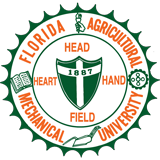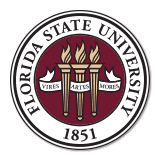
FAMU-FSU Engineering Assistant Professor Neda Yaghoobian is the principal and sole investigator in a new study to explore the effect of the flight behavior and transport of fragments of burning materials, called “firebrands” or flying embers, by turbulent winds. (Photo: FAMU-FSU Engineering/M Wallheiser)
A mechanical engineering researcher at the FAMU-FSU College of Engineering will use the National Science Foundation Faculty Early Career Development Award to advance the prediction and mitigation of fire spread into wildfire-prone areas. Her findings may elevate the importance of fire science in the national landscape.
Assistant Professor Neda Yaghoobian is the principal and sole investigator in a new study to explore the effect of the flight behavior and transport of fragments of burning materials, called “firebrands” or flying embers, by turbulent winds. Yaghoobian’s five-year $500,000 grant begins in the spring of 2021.
“By understanding what a flying ember experiences in its flight path through turbulent winds we can predict where it will land and whether the ember can create a spot fire,” Yaghoobian said.
Yaghoobian’s research uses computer modeling techniques to replicate the physics of firebrand transport in her models. The method allows her to examine the flight dynamics of the fiery ember particles in the turbulent wind flows to predict where they might land, and whether they can initiate new spot fires.
“Post-fire studies indicate firebrands are responsible for most of the wildfire spreads into communities, commonly referred to as wildland-urban interfaces (WUI - rhymes with ‘gooey’),” Yaghoobian said. “The embers can be carried by the wind by several meters and kilometers ahead of the main fire, so we are trying to understand this phenomenon better, considering different atmospheric flow and land surface conditions.”
The need for fire science research is essential. Wildfires have become a common occurrence in the U.S. and around the world. 4.5 million U.S. homes are currently at high or extreme risk of wildfires. The costs of wildfires are magnified when they spread into communities. In the first half of 2020, 19,762 wildfires occurred in the U.S. Over 439,422 acres were burnt.
“Many factors are making wildfires more prevalent,” Yaghoobian said. “We want to provide a fundamental understanding of the effects of winds, topography, and the atmospheric diurnal conditions on the risk of spot fire generation by firebrands.”
The NSF study will advance fire science and help with the prediction and mitigation of fire spread. An educational element to the award delivers funding for the training and mentorship of graduate and undergraduate students.
Yaghoobian also plans to introduce high school students to the project in the summer months to motivate them to be involved in fire science and STEM. She also plans to communicate information to the public through the annual “Build Your Bucket,” disaster preparedness event held each year before the Atlantic hurricane season.
“We plan to increase the general public’s scientific literacy about fire safety through events and other educational outlets,” Yaghoobian said. “We also hope to motivate a wide spectrum of students to engage in this emerging field.”
The NSF Career Awards support junior faculty who exemplify teacher-scholars through outstanding research and education. The integration of these endeavors in the context of their mission. Read more on her NSF research here.

